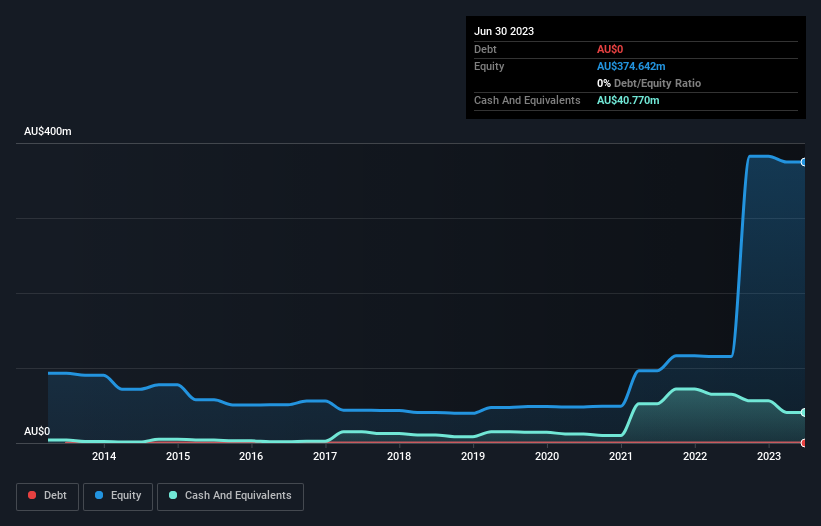Will Deep Yellow (ASX:DYL) Spend Its Cash Wisely?
There's no doubt that money can be made by owning shares of unprofitable businesses. For example, Deep Yellow (ASX:DYL) shareholders have done very well over the last year, with the share price soaring by 113%. But the harsh reality is that very many loss making companies burn through all their cash and go bankrupt.
Given its strong share price performance, we think it's worthwhile for Deep Yellow shareholders to consider whether its cash burn is concerning. In this report, we will consider the company's annual negative free cash flow, henceforth referring to it as the 'cash burn'. First, we'll determine its cash runway by comparing its cash burn with its cash reserves.
See our latest analysis for Deep Yellow
How Long Is Deep Yellow's Cash Runway?
A company's cash runway is calculated by dividing its cash hoard by its cash burn. As at June 2023, Deep Yellow had cash of AU$41m and no debt. Looking at the last year, the company burnt through AU$33m. That means it had a cash runway of around 15 months as of June 2023. While that cash runway isn't too concerning, sensible holders would be peering into the distance, and considering what happens if the company runs out of cash. Depicted below, you can see how its cash holdings have changed over time.
How Is Deep Yellow's Cash Burn Changing Over Time?
Whilst it's great to see that Deep Yellow has already begun generating revenue from operations, last year it only produced AU$38k, so we don't think it is generating significant revenue, at this point. As a result, we think it's a bit early to focus on the revenue growth, so we'll limit ourselves to looking at how the cash burn is changing over time. In fact, it ramped its spending strongly over the last year, increasing cash burn by 176%. That sort of spending growth rate can't continue for very long before it causes balance sheet weakness, generally speaking. Clearly, however, the crucial factor is whether the company will grow its business going forward. For that reason, it makes a lot of sense to take a look at our analyst forecasts for the company.
How Easily Can Deep Yellow Raise Cash?
Given its cash burn trajectory, Deep Yellow shareholders may wish to consider how easily it could raise more cash, despite its solid cash runway. Companies can raise capital through either debt or equity. Commonly, a business will sell new shares in itself to raise cash and drive growth. By comparing a company's annual cash burn to its total market capitalisation, we can estimate roughly how many shares it would have to issue in order to run the company for another year (at the same burn rate).
Deep Yellow has a market capitalisation of AU$1.3b and burnt through AU$33m last year, which is 2.6% of the company's market value. That means it could easily issue a few shares to fund more growth, and might well be in a position to borrow cheaply.
Is Deep Yellow's Cash Burn A Worry?
On this analysis of Deep Yellow's cash burn, we think its cash burn relative to its market cap was reassuring, while its increasing cash burn has us a bit worried. Cash burning companies are always on the riskier side of things, but after considering all of the factors discussed in this short piece, we're not too worried about its rate of cash burn. On another note, Deep Yellow has 5 warning signs (and 3 which are a bit unpleasant) we think you should know about.
If you would prefer to check out another company with better fundamentals, then do not miss this free list of interesting companies, that have HIGH return on equity and low debt or this list of stocks which are all forecast to grow.
Have feedback on this article? Concerned about the content? Get in touch with us directly. Alternatively, email editorial-team (at) simplywallst.com.
This article by Simply Wall St is general in nature. We provide commentary based on historical data and analyst forecasts only using an unbiased methodology and our articles are not intended to be financial advice. It does not constitute a recommendation to buy or sell any stock, and does not take account of your objectives, or your financial situation. We aim to bring you long-term focused analysis driven by fundamental data. Note that our analysis may not factor in the latest price-sensitive company announcements or qualitative material. Simply Wall St has no position in any stocks mentioned.

 Yahoo Finance
Yahoo Finance 
